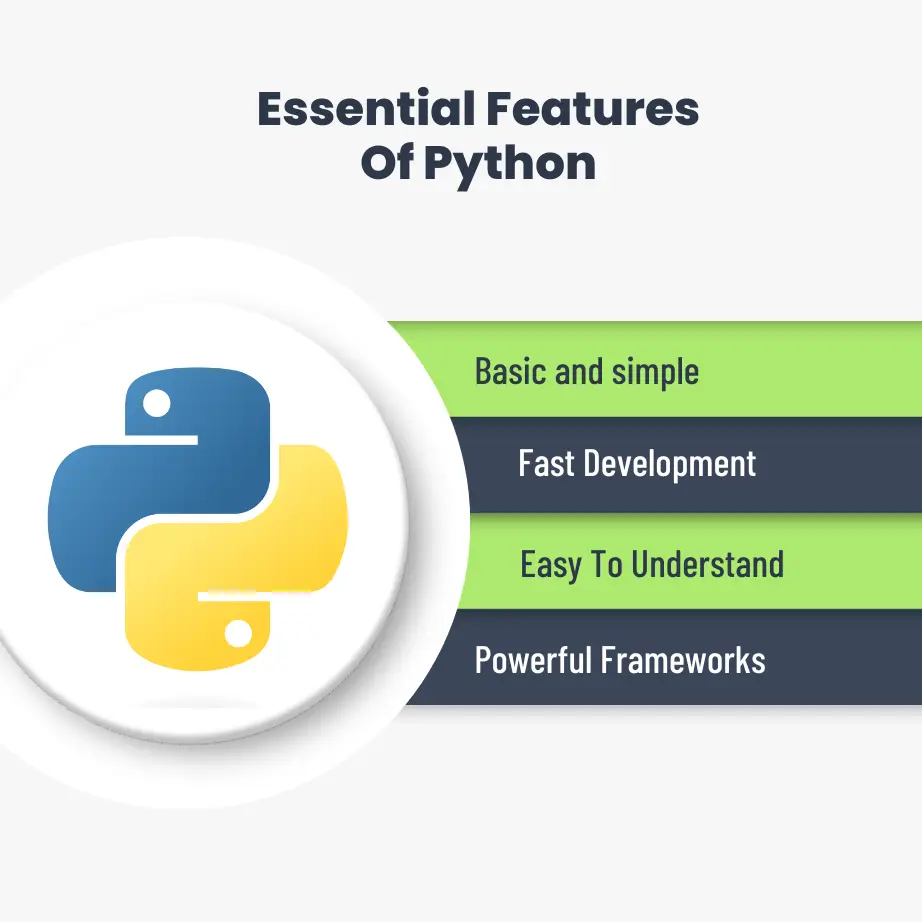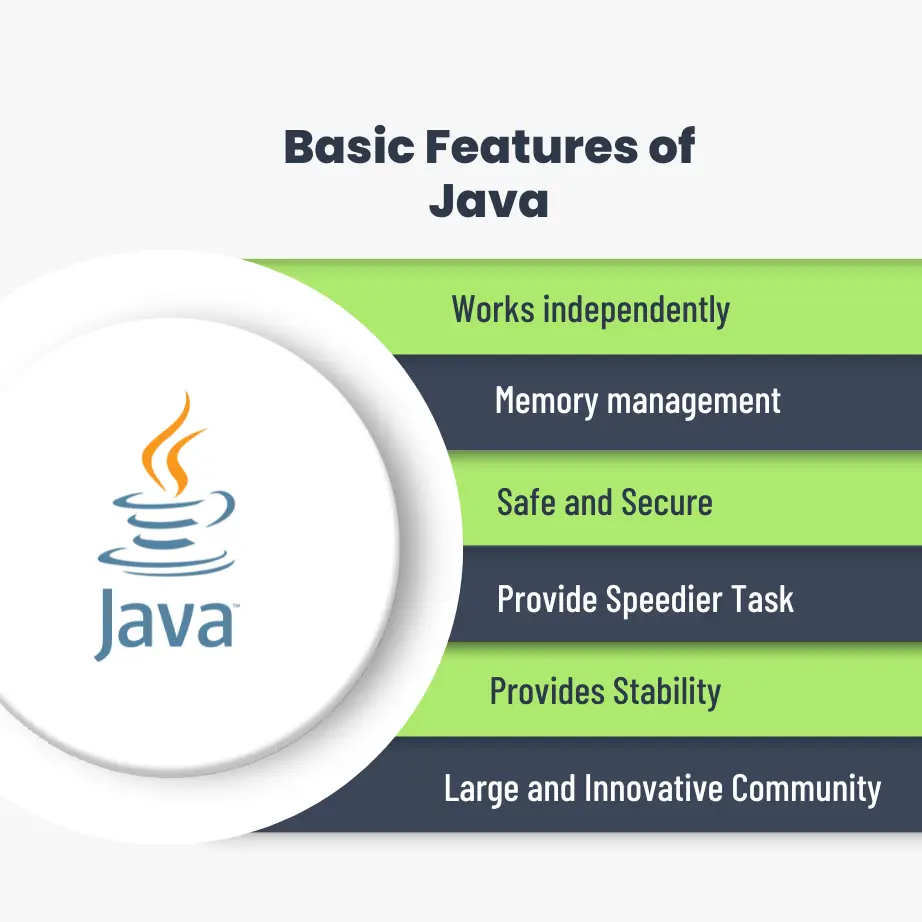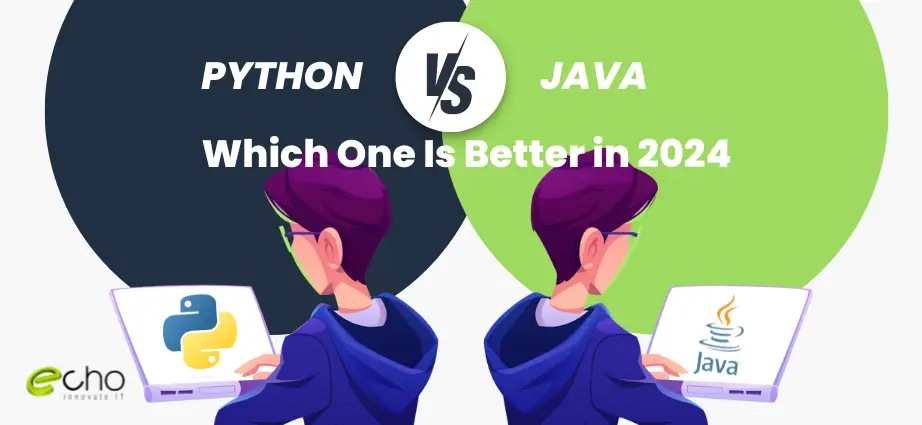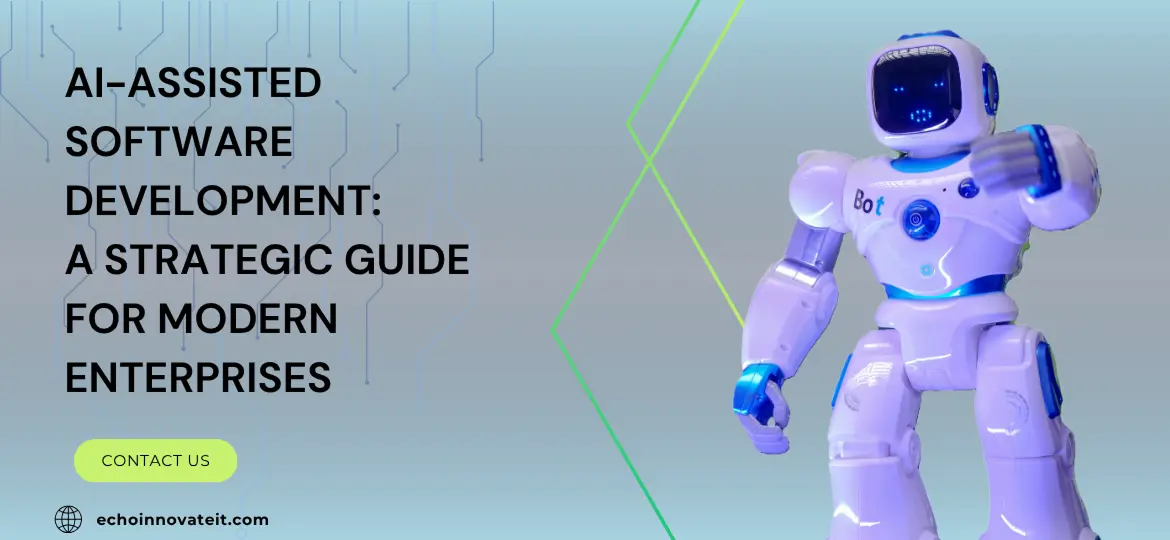Python vs Java: Which one is better in 2024?
All of us know how Python and Java are ruling the software development industry today. Businesses are widely integrating them for various purposes of markets and industries. Both developed in the 1990s, are old and trusted programming languages highly appreciated for their platform independence, allowing the creation of cross-platform software. Agreeing with the fact that both these languages have equal potential for your business, most of us are confused between the two.
That makes sense. Right?
So to find the right programming language between Python and Java for your valuable business, let’s do a detailed comparison to reach a better conclusion. If we look at different fields available in the market today, some research sources tell us that Python is leading in Science & Education, Computers Electronics, & Technology, and Arts & Entertainment, and many more e-commerce applications. Whereas Java is used more frequently in Law & Government, Finance & Vehicles. Clearly, Python has a higher usage coverage in more website categories with leading 100K sites, top 1 M sites, and the entire web. While Java leading the 10 K sites tentatively.
Yet before coming to any final point, let’s first understand these two languages right from their meanings, distinctive features, advantages, and disadvantages.
What Is Python?
Python was initially introduced in 1991. It was developed by Guido van Rossum at the Netherlands’ National Research Institute for Mathematics and Computer Science. This dynamically typed programming language was created to be both useful and readable. Python is dynamically typed, which means that type-checking occurs at runtime.
Python’s ease of use makes it one of the most popular programming languages, often being compared to Perl, Ruby, and, of course, Java. Over the years, this language has demonstrated tremendous adaptability in a variety of contexts. Python and its frameworks are now widely used in machine learning, image processing, multimedia applications, and other fields.
Also Read:
Basic Features In Python

Python has a basic syntax: It is intuitive since it is comparable to the English language. Python is also incredibly concise, which means that lines of code are shorter and fewer lines are required to get the desired result.
Python encourages quick development: Python software is faster to produce and has fewer code lines than other programming languages due to dynamic typing and the language’s fundamental simplicity.
Python is simple to understand: This language has a considerably easier learning curve than Java. It is user-friendly for newcomers due to its simple syntax, clear instructions, and extensive teaching resources.
Python offers extremely powerful frameworks and libraries: Django and Flask are outstanding web development frameworks, while Tensorflow, Scikit Learn, and Pytorch excel at machine learning. Python has numerous libraries for scientific computation, data analysis, and other data science applications.
Advantages Of Python
Availability of third-party modules: Python has a thriving ecosystem of third-party modules and libraries that extend its capabilities for a variety of jobs.
Comprehensive support libraries: Python’s numerous support libraries, such as NumPy for numerical calculations and Pandas for data analytics, make it ideal for scientific and data-related applications.
Open source with a large active community base: Python is an open-source project with a big and active community that contributes to its development and maintenance.
Flexible, and simple to read, learn, and writePython is noted for its simplicity and readability, making it a good choice for both new and experienced programmers.
Simple to operate data structures: Python provides data structures that are straightforward to use, making data manipulation and maintenance easier.
Disadvantages Of Python
Performance: Python is an interpreted language, therefore it may be slower than compiled languages such as C or Java. This can be a problem with performance-intensive jobs.
Global Interpreter Lock: Python’s Global Interpreter Lock (GIL) prohibits several threads from executing Python code simultaneously. This may limit the parallelism and concurrency of certain programs.
Memory consumption: Python can be memory intensive, particularly when working with huge datasets or running complicated algorithms.
Dynamically Typed: Python is a dynamically typed language, which means that the types of variables can change during execution. This makes it more difficult to detect problems and can result in defects.
Also Read:
What Is Java?
James Gosling developed Java at Sun Microsystems (which was eventually acquired by Oracle) and published it in 1995. It is a statically typed, general-purpose, object-oriented programming language. Java is compiled into bytecode that may be executed on any JVM (Java Virtual Machine). As a result, this language is platform-independent, as it does not require compilation on a specific platform machine. Java’s syntax is similar to C++ and C, but it offers less low-level capabilities.
Most importantly, it became the default language for developing Android applications. As a result, Android’s dominant position as the most popular mobile operating system increased Java’s popularity. Apart from mobile app development, Java offers a wide range of applications. Web developers prefer this object-oriented language as it has proven quite efficient in Big Data and IoT companies.
Some Basic Features of Java

Java is independent of platforms: The guiding premise of this language is “write once, run anywhere.” According to this approach, compiled code can be executed on a variety of platforms without the need for recompilation. As a result, any device capable of running a Java Virtual Machine may execute Java code.
Java develops speedier apps: Compared to other programming languages, Java allows multithreading and offers automatic memory management. Because of these qualities, Java applications can make better use of computer hardware than, say, Python applications.
Java gives more stability and backward compatibility: Because Java is a compiled language with static type and tight syntax restrictions, any problems must be corrected before compilation. This is why compiled Java applications are more stable and error-free than software built in dynamically typed languages like Python.
Java has a large and innovative community: Because of its loyal supporters, Java has a diverse set of libraries and frameworks. The community also offers a wealth of documentation, educational tips, FAQs, and other reference tools to assist with coding and learning Java.
Advantages Of Java
Straightforward Java: It is much easier to program, compose, gather, investigate, and learn than elective programming dialects. Java may be less complicated than C++ in terms of memory allocation and garbage collection.
Item-oriented: It allows you to create standardized projects and reusable code.
Stage-independent Java code: It runs on any machine and does not require any further code; however, the JVM must be installed on the machine.
Java is a distributed language: Java is a distributed language since it provides a tool for spreading information and projects across multiple PCs, hence improving the framework’s presentation and proficiency. The RMI (Remote Method Invocation) is a feature that improves distributed handling in Java.
Secure Java: There is no clear pointer. Aside from that, the entrance to classrooms is characterized by a security administrator.
Disadvantages Of Java
Execution language: It is slower than other dialects because it is a memory-burning language.
Look and feel: The default appearance of GUI apps created in Java that use the Swing toolkit differs significantly from that of local applications.
Memory Management: In Java, memory is managed through trash pickup; whenever the waste collector runs, it influences the display of the device. This is typical because all other strings within the must be interrupted for the garbage authority string to function.
Java demands a large memory space: When compared to other programming languages such as C and C++, Java requires a substantial amount of memory. During the execution of garbage collection, memory productivity, and system display may be adversely affected.
Also Read:
Python Vs Java: Major Differences
| Factors | Python | Java |
|---|---|---|
| Language | Interpreted Language | Compiled and interpreted language. |
| Typing | Dynamically typed | Statistically typed |
| Popularity | Slightly more popular currently | Less popular | Applications | Scientific and numerical computing; Machine Learning applications; Image processing; and language development. | Web applications, desktop graphical user interfaces, enterprise solutions, and embedded systems. | Syntax | Less code - the developer does not need to fill in the variables because they are entered at runtime; there is no requirement for enclosing brackets or indentation restrictions. | More code - the developer must type in all of the variables and follow strict syntax requirements. | Performance | Compiles code at runtime, making it less adaptable to other platforms. | Java precompiles code and distributes the resulting bytecode. Java's static-typing syntax allows for faster and easier compilation than Python's dynamic-typing. | Stability | Python tests the syntax during runtime, hence it is not as stable as Java, despite its rapid development. | Higher stability - Because everything must be evaluated and established before running, the code must be very properly designed, which may result in the software being more reliable and less prone to crashes. | Speed | Python allows for rapid development since it is simple, easy, and practical to write in. | Java projects typically take longer and may necessitate larger development teams. | Learning | Easier to learn - A good choice for novices because the syntax is simple and clear. | It takes longer to learn because there is a steep learning curve at the start. | Database Support | Offers weak connectivity | Offers stable connectivity. |
Python Vs Java: Which One Is Leading The Current Market Today
Focusing on the current market between Python vs Java; let’s find out what the current market forecast has to say:
- According to PYPL, Python is the top language in all five nations (the United States, India, Germany, the United Kingdom, and France). Python has surpassed Java in these five nations, and its market share in Germany, the United Kingdom, and France is more than double that of the latter. Python and Java accounted for over half (48%) of all global searches. Python has the highest share in the UK (34%), and the lowest in India (31%).
- Python’s global search share, together with Java’s, amounts to about half of the programming language market (48%). Python dominates with a 34% share in the UK, demonstrating its extensive acceptance and appeal.
Python Vs Java: Which Is Better For The Future
There are some essential factors to consider while deciding between Python and Java. The first refers to your current experience. If you wish to start a career as a software developer, learning Python will be a little better fit. If you currently know one programming language and want to learn another to expand your potential and professional skills, Java is a safe choice.
Overall, Python is good for people looking for a rapid start in coding, whereas Java is ideal for aficionados who can commit more time and effort to mastering a strong programming language. This devotion will be rewarded with a better wage, which is an important factor to consider.
Another important consideration is the area of implementation for each language. Python and Java are both general-purpose programming languages with object-oriented features. However, in real implementations, each is useful for some reasons but ineffective for others. Let’s look at a few applications for these programming languages.
Conclusion
Wrapping up today’s blog on Python vs Java, I hope you gained in-depth clarity between the two by providing our comprehensive comparison. Python and Java; both are popular languages that you can choose for your upcoming projects. As we stated the above factors like your current needs, your application type, and your purpose to decide the best.
Echoinnovate IT creates and designs customized web and iOS development apps, emphasizing other services such as Flutter, React Native, Node JS Development, and much more. We give the best IT solutions at affordable prices by leveraging cutting-edge technologies such as Machine Learning and Artificial Intelligence. If you have any questions, please contact us at Echoinnovate IT or get in touch to employ our professional developers.
Also Read:
FAQs- Python vs Java
Which language is easier to learn, Python or Java?
Python is generally considered easier to learn due to its simpler syntax and readability.
Which language is better for web development, Python or Java?
Both Python and Java are used for web development, but Python, especially with frameworks like Django and Flask, is often preferred for its simplicity and rapid development.
Is Python or Java better for data science?
Python is the predominant language in data science due to its extensive libraries like NumPy, Pandas, and Scikit-learn, making it more popular than Java in this domain.
Which language is more suitable for mobile app development, Python or Java?
Java has historically been the primary language for Android app development, while Python can be used with frameworks like Kivy and BeeWare for cross-platform mobile app development.



